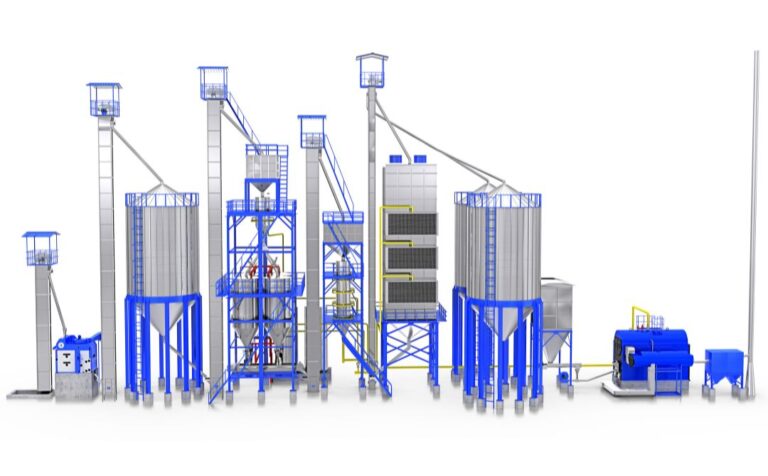Table of Contents
As the world’s largest rice exporter, shipping over 24.5 million tones in 2024-25, India meets global hunger with its renowned parboiled rice, prized for its nutrition and durability. Indian rice manufacturers have scaled parboiled rice production to meet soaring demand, particularly in Africa and the Middle East, generating ₹83,000 crore in exports.
For millers, exporters, and traders, leveraging modern rice processing technologies in India ensures quality and efficiency, boosting profits by ₹50 lakh-₹5 crore annually.
The growth of parboiled rice plant exports from India, and actionable steps to thrive in the rice processing industry, ensuring India’s dominance in the global market.
The Rising Demand for Parboiled Rice
India’s rice production, reaching 147 million tonnes in 2024-25, fuels both domestic needs and global markets, with parboiled rice accounting for 7-8 million tonnes of exports. Valued for its enhanced nutrition, higher B vitamins, calcium, and fiber as well as a longer shelf life (18-24 months), parboiled rice is a favorite in regions like Benin, Nigeria, and Saudi Arabia. However, meeting this demand faces challenges like high energy costs and export duties. A modern parboiled rice plant plays a crucial role in addressing these challenges. Parboiled rice suppliers India leverage advanced milling to achieve 70-75% head rice yield, saving ₹50,000-₹2 lakh per 100 tones. Understanding the role of Indian rice mills in global parboiled rice supply reveals how innovation drives India’s export success.
How Indian manufacturers produce parboiled rice at scale involves a meticulous parboiled rice production process
- Soaking
Paddy is soaked in water (50-60°C, 6-12 hours) to reach 24-30% moisture, enabling nutrient transfer from husk to grain. Advanced systems like chromate soaking reduce odor and time.- Outcome: Enhances nutrition, yielding 70-75% head rice.
- Steaming
Soaked paddy is steamed (100-120°C, 20-30 minutes) to gelatinize starch, hardening grains for milling. Rotating Sieve Systems reduce steaming time by 20%, improving quality.- Outcome: Minimizes breakage, boosting export value (₹60-150/kg).
- Drying
Paddy is dried to 12-14% moisture using hot air dryers, ensuring pale yellow grains ready for milling.- Outcome: Reduces spoilage, saving ₹50,000-₹1 lakh per 100 tonnes.
- Milling
Modern mills dehusk and polish paddy, achieving 70-75% head rice yield compared to 65-70% for raw rice.- Outcome: Produces export-ready Indian rice.
Modern rice processing technologies in India, like automated sieves and IoT-monitored dryers, reduce energy use by 20-30% and saves money.
Growth of parboiled rice exports from India has been remarkable
- Volume: Exports reached 7-8 million tonnes in 2024, a 14% CAGR from 2017-21, driven by demand in Africa (Benin, Nigeria) and the Middle East (Saudi Arabia).
- Value: ₹21,200 crore in 2022 for non-Basmati parboiled rice, growing 0.4% YoY despite 10% duties.
- Competitive Pricing: Indian parboiled rice (₹31,500/tonne) undercuts Thailand (₹41,000/tonne), boosting demand.
- Key Markets: Benin, Cote d’Ivoire, and Bangladesh imported ₹2,120 crore worth in 2022-23.
Challenges Faced by Indian Rice Exporters
- Export Duties: 10% duty on parboiled rice plant adds ₹3,000-₹5,000 per tonne, reducing competitiveness.
- Solution: Lobby for flat duties via Rice Exporters Association.
- High Energy Costs: Parboiling consumes 200-300 kWh per 100 tonnes.
- Solution: Adopt solar-powered dryers, saving 30% energy.
- Regulatory Barriers: Pesticide residue limits in EU markets risk rejections.
- Solution: Use resistant varieties like Pusa Basmati 1, certified by APEDA.
- Water Usage: Parboiling uses 1-1.2 litres/kg paddy, generating wastewater.
- Solution: Install effluent treatment plants for wastewater recycling.
Role of Indian Rice Mills in Global Supply
- Scale: 75,000-100,000 mills process 147 million tonnes of paddy, with 60% parboiled (88 million tonnes).
- Quality: Modern mills achieve 70-75% head rice yield, meeting global standards (TSS <100 mg/L for wastewater).
- Innovation: Rice processing industry adopts rotating sieves and IoT dryers, reducing costs by ₹50,000-₹2 lakh per 100 tonnes.
- Export Reach: Supply 120+ countries, with 45% of global rice exports (24.5 million tonnes in 2024-25).
Ready to join parboiled rice suppliers India? Follow these steps
- Assess Demand: Target high-demand markets (Africa, Middle East) for IR 64 or Sona Masoori (₹60-150/kg).
- Upgrade Technology: Install rotating sieve systems and IoT dryers (₹5-20 lakh) for modern rice processing technologies in India.
- Budget: Plan ₹10-50 lakh for mill upgrades, ₹1-5 lakh yearly maintenance.
- Ensure Compliance: Obtain FSSAI/ISO certifications (₹10,000-₹50,000) to avoid export rejections.
- Select Vendor: Partner with SKF Elixer for automated parboiling systems.
Market Outreach: Join platforms like Tradologie for global buyer leads.
Conclusion
Indian rice manufacturers are meeting global demand through efficient parboiled rice production, leveraging modern rice processing technologies in India to supply 7-8 million tonnes yearly.
Despite challenges faced by Indian rice exporters, such as duties and energy costs, innovations like rotating sieves and IoT systems save money.
SKF Elixer India Pvt. Ltd. offers advanced parboiling systems, ensuring 70-75% head rice yield and CPCB-compliant wastewater management. Contact SKF Elixer today to elevate your rice export from India and meet global demand with high-quality.
FAQs
Q1: How do Indian manufacturers produce parboiled rice at scale?
They use a step-by-step process: soaking (6–12 hours), steaming (20–30 minutes), drying (to 12–14% moisture), and milling in advanced parboiling rice plants, achieving 70–75% head rice yield.
Q2: What is the growth of parboiled rice exports from India?
India exported 7–8 million tonnes of parboiled rice in 2024, valued at ₹21,200 crore. Exports are growing at a 14% CAGR, driven by strong demand in Africa and the Middle East.
Q3: What are the challenges faced by Indian rice exporters?
Exporters face challenges such as export duties, high energy costs, wastewater management, and regulatory barriers—addressed through certifications and efficient processing systems.
Q4: What is the role of Indian rice mills in global supply?
Indian rice mills process 88 million tonnes of rice annually, with 60% parboiled. They contribute 45% to global rice exports (around 24.5 million tonnes), thanks to advanced milling infrastructure.
Q5: What are modern rice processing technologies in India?
Technologies like rotating sieve systems, IoT-enabled dryers, and automated milling systems reduce energy use by 20–30% and improve rice yield by 5–10%.
Good reads are meant to be shared









